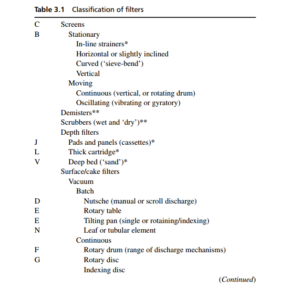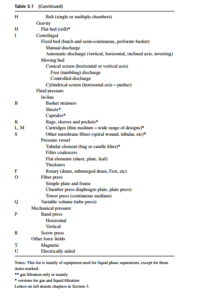0
-
An empty cart
You have no item in your shopping cart
envato-wordpress-toolkit domain was triggered too early. This is usually an indicator for some code in the plugin or theme running too early. Translations should be loaded at the init action or later. Please see Debugging in WordPress for more information. (This message was added in version 6.7.0.) in /var/www/wp-includes/functions.php on line 6121g5plus-darna domain was triggered too early. This is usually an indicator for some code in the plugin or theme running too early. Translations should be loaded at the init action or later. Please see Debugging in WordPress for more information. (This message was added in version 6.7.0.) in /var/www/wp-includes/functions.php on line 6121This first main section of the Handbook, which deals with fi ltration equipment, consists of a number of areas, each devoted to a type of fi lter. In accordance with the main theme of the book, more attention is paid to those fi lters used for clarification of gas or liquid streams than to those designed for solids recovery from fluid suspensions, although sufficient is included about these latter so that they can be seen in their context.
The complete spectrum of filtration equipment is shown in Table 3.1 , together with a correlation with the chapters of this section. The classification of Table 3.1 includes a few items that are on the fringe of filtration as it is being interpreted
here, and these items: demisters, scrubbers, and filter coalescers are covered separately in Section 7.
Table 3.1 is organized primarily by the type of filtration used in each filter. Relatively pure surface filtration comes first, exemplified by screens, followed by depth filtration. The bulk of the table is taken up with those filters that work initially by surface screening, but which move quickly into the formation of a cake of accumulated solids on the surface of the filter medium. Once a thin cake is formed, the remaining filtration occurs through this cake, which grows in thickness until the
pressure differential across it becomes too great.


The cake filters are divided by the driving force that causes the filtration: vacuum (i.e. a negative pressure at the filter medium), gravity alone (i.e. the hydrostatic head of the liquid above the medium), centrifugal force (i.e. an amplified gravity
effect), fluid pressure (imposed by the suspension feed pump), mechanical pressure (a squeezing effect), and the use of other force fields. The large number of types of pressure filter is obvious – for most people the pressure filter, from simple cartridge
to the complex fully automated filter press, typifies filtration.
Notation is also made in Table 3.1 of which filtration equipment items are intended mainly or totally for gas filtration, and which, suitably designed, can be used for both fluids. It can be seen that the range of gas filtration equipment is much smaller than that for liquids. This is because the recovery of solids from a gas suspension is a task not often undertaken in a filter, a cyclone being used instead (and covered in Section 7). Gas filtration is almost always a decontamination process, whether it is of inlet air to buildings or machinery, or of exhaust streams from machines or processes. Solids recovery from liquid suspension, on the other hand, is a task frequently undertaken by filters, and the wide variety of types of liquid filter
is almost entirely because of the problems imposed on filter design by the need to remove these collected solids from the inside of the filter.
It should be noted that the full spectrum of mechanical separations should include a number of sedimentation processes and their related equipment. These are also dealt with in Section 7.
The contents of Section 3 aim to describe the main types of filter, illustrating their methods of operation and key characteristics. Rather more space will be given to the process, solid recovery filters, because Sections 4 to 6 are almost entirely concerned with the chief applications for filtration of contaminants, and these sections will return to the relevant equipment as well.
This Handbook has a descriptive role and is not intended to act as a textbook of filtration technology. For that function the reader is directed to: Solid Liquid Separations (2005), Principles of Industrial Filtration (2005), Scale-up of Industrial Equipment (2005), Equipment Selection and Process Design (2006) (all by R.J. Wakeman and E.S. Tarleton, Elsevier Advanced Technology); or SolidLiquid Filtration and Separation Technology (by A. Rushton, A.S. Ward and R.G. Holdich, 2000, 2nd Edn, Wiley-VCH).